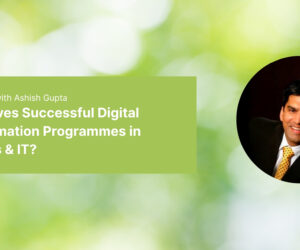What do you do, specifically, for vyn?
As the product architect for vyn, I have to understand the market, customers, competitors, our business and how it works, what people we have, the technology – both what we currently have and the technology of this area in general.
I have to put all these things together into a series of decisions about what we’re going to build, how, when, who’s going to build it, what we can outsource, what we can get from suppliers, and how we operate.
I am also implementing that, so recruiting and managing the engineers. Everyday is different, and that’s why we go into engineering!
Of course, it’s difficult to actually consume all of that information. At this stage of the business you have to make a lot of very impactful decisions. It helps to have as much information as possible.
How do you absorb all this information?
Listening to people is the main one. Hopefully that means people feeling that they’re able to or want to talk to me. But generally people do. They want stuff to happen. And if you put yourself in the right place they come and ask you to do things. And then you have to interpret what’s really behind that, go and collect information, understand the whole context around that and prioritise things. And temper that with data, so financial numbers and other kinds of metrics.
What problems have you helped our customers solve?
In many workflows you have people working in the field. So, if you’ve got someone who’s made a hole in the road and repaired it, you want them to have done certain things, to have repaired the road to a certain quality.
And that’s usually important to you in some way, so, for example, you might want to try to avoid having to deal with legal action.
You could get someone to write down that they repaired the road properly, to take some photos, but you need some way of doing that.
If you’ve got an engineer who goes to a site and gives a quote on fitting a boiler, then you need to accurately record what the work is that’s been quoted. If you don’t do that, then the rest of the organisation could behave wrongly.
They could send out an engineer with the wrong parts, who does the wrong thing, it ends up costing more than it should have done, you have to send someone out to repair it, or the customer complains – All these things can happen.
What does vyn do?
In order for an organisation to behave correctly they need to capture good quality, timely, information from field forces in all these different scenarios. That’s what vyn does.
vyn makes it not only possible but actually straightforward, actually enjoyable, for field engineers to report very high quality data (both quantitative and qualitative) back into the organisation. The organisation can then – quickly and effectively – take good quality decisions based on that data – both on individual events, what happened with this particular job, but also aggregate: What are we doing across all of our jobs? How’s our field force performing? What things can we do to improve the situation? How’s our pipeline looking? What are competitors doing?
This is information you might be able to collect from your field force if they were reporting what they were doing – and doing it well!
Of course, people try to address this issue, but so far they haven’t really taken advantage of the current state-of-the-art in technology – in terms of the full range of capabilities of mobile phones, the cloud SaaS approach to integrations, meaning how you actually get that data back into enterprise systems, the AI and data analytics you can now, only very recently, perform on these kinds of data: On images, video, text, speech…
What we have is a platform for field data capture and analytics.




Leave a reply